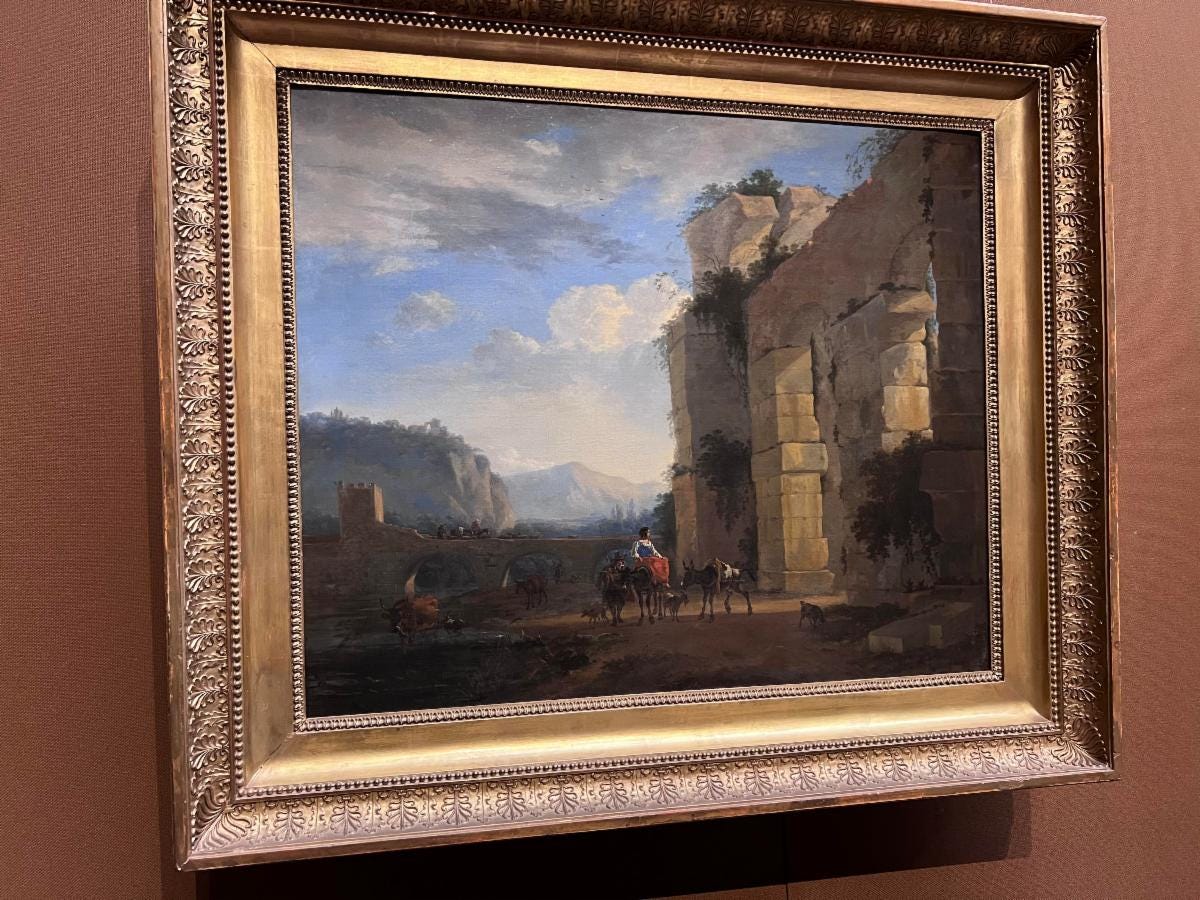I wrote this article in June during my three-week art trip to Europe. This one focusses on the value of sharing art with others.
When I was in Vienna at the Kunsthistorisches Museum last month, I got to hang out with some friends. One gallery game we played was for each of us to pick an artwork, and then we'd Read each together as a small group. I have to admit that I was a little bummed when my friend, Thomas, picked a landscape with ruins. My initial thought was something like, "Oh, another landscape with ruins." It's a kind of scene that I see so many of in my museum travels, and that I'll skip over 99% of the time. There are so many out there, and they often look so much alike! (Go ahead, google "17th century landscape with ruins.")
Now a couple of things about Thomas. 1) I hadn't seen him in many years, and some of my most vivid memories with him were of talking about video games and drinking Mountain Dews. 2) He loves Physics, and I'm not sure when the last time was that he had stepped into an art museum.
But, back to the story! Regardless of my initial impression of the painting, I primed myself for reading it with the thought that, at least, I'd get to know Thomas a bit better through this painting. I still wasn't expecting to get much from it, myself.
As we started reading it, two things happened to make me start to love this painting. (I invite you to spend some time with the painting yourself before you read on.)
First, Thomas started to describe the juxtaposition of the grand ruins with the peasants who were walking by. He described how this scene reminded him of his trip to Rome. He would walk among the ruins there and think about how much time had passed--how much history the old buildings and statues had borne witness to. I felt like I got to know something about Thomas through the painting that I wouldn't have simply chatting over sodas. That made me glad that I remained curious about the painting! But, that was only one payoff from the experience.
As we read more of the painting, we pushed "rewind and play" on the scene, and realized that the little group walking by, just going about their day, was passing in front of this opening where light came through. We imagined what the young woman was looking at, and then it dawned on me. I was seeing through her eyes a scene like the Roman Forum opening up to her from behind the archways. And the kind of moment crystalized for me: a moment of glimpsing grandeur during the routine of one's life.
I'd go on to think of personal moments like catching site of a medieval church while walking to a cafe in Paris; or of seeing some gargantuan dessert rock formations while driving on the Interstate in Phoenix. Or getting a glimpse of a magnificent sunset while on my commute home. It's a kind of moment I love, and that I look forward to.
Letting myself experience this "boring" painting not only helped me bond with Thomas, but the artwork itself became much more personally meaningful than I thought it could be.
I got a question at a recent talk I gave (in Phoenix, actually) about how I pick artworks to spend time with. As many of you know, I usually pick ones that I am initially intrigued by. But I've frequently had the experience of falling in love with an artwork I was initially not impressed by. This experience in Vienna was a good reminder that my first impression can be limiting. The next time a friend suggests an artwork I'm not initially intrigued by, I'll remember Thomas's "Landscape with Ruins."





Very interesting. Also like you, I always skipped these “boring” paintings. Now you’ve given me a reason to stop and try to make more out of them.
Always interesting to hear and see the infinitely diverse spectrum of how different people react to the same art, and how it relates to their own experiences.
Thank you!